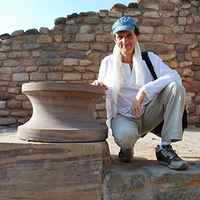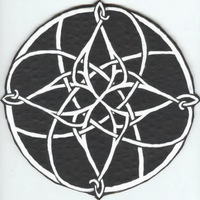
Michel Danino
French-born Indian scholar, author and educationist. Has been living in India since 1977: in Auroville, in the Nilgiris (Tamil Nadu), near Coimbatore, and currently at Indian Institute of Technology Gandhinagar (Gujarat). Has lectured widely on aspects of Indian civilization in many cultural and educational institutions. Currently visiting professor at IIT Gandhinagar, where he is assisting the Archaeological Sciences Centre (https://asc.iitgn.ac.in/), giving courses on Indian civilization, and coordinating a course on Indian Knowledge Systems (https://iks.iitgn.ac.in/).
Writes in English and French. Has contributed papers to "Man and Environment", "Puratattva", "Dossiers d'archéologie", etc, and over 30 book chapters. His recent books are "L'Inde et l'invasion de nulle part" (Les Belles Lettres, Paris, 2006); "The Lost River: On the Trail of the Sarasvati" (Penguin Books, New Delhi, 2010); "Indian Culture and India's Future" (DK Printworld, New Delhi, 2011); "Knowledge Traditions & Practices of India", co-edited with Prof. Kapil Kapoor, Textbook for Classes XI (2013) and XII (2015); "Sri Aurobindo and India's Rebirth", as editor (Rupa, New Delhi, 2018); "The Dawn of Indian Civilization and the Elusive Aryans" is (still) under preparation.
Life member of the Indian Archaeological Society (New Delhi), the Indian History and Culture Society (New Delhi), the Indian Society for Prehistoric and Quaternary Studies (Pune), and the Indian Society for the History of Mathematics.
Former member, Indian Council of Historical Research and Indian National Commission for History of Science.
Currently a member of: Central Advisory Board on Culture (Ministry of Culture, Govt. of India); National Steering Committee for the development of National Curriculum Frameworks; National Syllabus and Teaching-Learning Material Committee (both under Ministry of Education, Govt. of India); Academic Council of Indic Academy; International Advisory Council, Auroville Foundation; International Advisory Council, Chanakya University.
Michel Danino's YouTube channel has links to some 100 talks and lectures, with more on the way:
https://www.youtube.com/channel/UCtK2rjmZlrnzXsXI2vj3_nw
Address: IIT Gandhinagar, Palaj, Gandhinagar 382055 Gujarat, India
Writes in English and French. Has contributed papers to "Man and Environment", "Puratattva", "Dossiers d'archéologie", etc, and over 30 book chapters. His recent books are "L'Inde et l'invasion de nulle part" (Les Belles Lettres, Paris, 2006); "The Lost River: On the Trail of the Sarasvati" (Penguin Books, New Delhi, 2010); "Indian Culture and India's Future" (DK Printworld, New Delhi, 2011); "Knowledge Traditions & Practices of India", co-edited with Prof. Kapil Kapoor, Textbook for Classes XI (2013) and XII (2015); "Sri Aurobindo and India's Rebirth", as editor (Rupa, New Delhi, 2018); "The Dawn of Indian Civilization and the Elusive Aryans" is (still) under preparation.
Life member of the Indian Archaeological Society (New Delhi), the Indian History and Culture Society (New Delhi), the Indian Society for Prehistoric and Quaternary Studies (Pune), and the Indian Society for the History of Mathematics.
Former member, Indian Council of Historical Research and Indian National Commission for History of Science.
Currently a member of: Central Advisory Board on Culture (Ministry of Culture, Govt. of India); National Steering Committee for the development of National Curriculum Frameworks; National Syllabus and Teaching-Learning Material Committee (both under Ministry of Education, Govt. of India); Academic Council of Indic Academy; International Advisory Council, Auroville Foundation; International Advisory Council, Chanakya University.
Michel Danino's YouTube channel has links to some 100 talks and lectures, with more on the way:
https://www.youtube.com/channel/UCtK2rjmZlrnzXsXI2vj3_nw
Address: IIT Gandhinagar, Palaj, Gandhinagar 382055 Gujarat, India
less
Related Authors
Shreyas Bharule
Indian Institute of Technology Kharagpur
Mackenzie Brown
Trinity University, Texas
G M Muzahidul Islam
National University, Bangladesh
InterestsView All (6)










Uploads
Harappan archaeology by Michel Danino
While climatic studies from the 1970s to 1990s tended to support the view that a marked trend towards aridity had set in even before the urban or Mature Harappan phase (2600–1900 BCE), more recent studies have pushed this shift to the end of the third millennium BCE. This is also the time when, in the eastern domain of the Harappan civilization, the Sarasvati dwindled to a minor seasonal river, while floods appear to have been caused by a shifting Indus in the west. Other possible causes include the pressure put on remaining forests by intensive industrial activities. In any case, the archaeological evidence records the abandonment of Harappan sites in the Sarasvati’s central basin, and a migration of Late Harappan settlements: north-eastward towards the foot of the Shivalik Hills, eastward across the Yamuna, possibly too westward towards the Indus plains and southward towards the Vindhyas.
This paper attempts to correlate archaeological evidence with sedimentological, palynological and other palaeoclimatic studies and suggests a few possible conclusions and lines of further exploration.
Sarasvati River by Michel Danino
The second part briefly surveys ten of the most recent scientific investigations in the Ghaggar’s basin and the issues they have tried to address, such as the existence of a mega-river, contributions to it from the Sutlej and the Yamuna, the chronology of the mega-river’s decline and disappearance, the Ghaggar system’s fluvial condition during the Mature Harappan period, and the impact of its decline on the Harappan settlements in its basin. The resulting picture holds some elements of answer, but remains incomplete in view of the complexity of the issues involved: the Holocene’s hydrology, climate, environment have their say, besides local tectonics. Nevertheless, a few of the old theories can now be revised.
But there is another side to the story, which began in 1855 with the identification of the river’s dry bed, currently named Ghaggar–Hakra. From the 1940s, archaeological explorations initiated by Marc Aurel Stein have unearthed hundreds of Harappan sites in the Sarasvati’s basin (the Yamuna–Sutlej interfluve). Recent satellite, climatic, geological and river studies have completed the picture, confirming in particular a connection between the disappearance of the Sarasvati in its central basin and the break-up of the Indus–Sarasvati civilization.
Aryan issue by Michel Danino
While climatic studies from the 1970s to 1990s tended to support the view that a marked trend towards aridity had set in even before the urban or Mature Harappan phase (2600–1900 BCE), more recent studies have pushed this shift to the end of the third millennium BCE. This is also the time when, in the eastern domain of the Harappan civilization, the Sarasvati dwindled to a minor seasonal river, while floods appear to have been caused by a shifting Indus in the west. Other possible causes include the pressure put on remaining forests by intensive industrial activities. In any case, the archaeological evidence records the abandonment of Harappan sites in the Sarasvati’s central basin, and a migration of Late Harappan settlements: north-eastward towards the foot of the Shivalik Hills, eastward across the Yamuna, possibly too westward towards the Indus plains and southward towards the Vindhyas.
This paper attempts to correlate archaeological evidence with sedimentological, palynological and other palaeoclimatic studies and suggests a few possible conclusions and lines of further exploration.
The second part briefly surveys ten of the most recent scientific investigations in the Ghaggar’s basin and the issues they have tried to address, such as the existence of a mega-river, contributions to it from the Sutlej and the Yamuna, the chronology of the mega-river’s decline and disappearance, the Ghaggar system’s fluvial condition during the Mature Harappan period, and the impact of its decline on the Harappan settlements in its basin. The resulting picture holds some elements of answer, but remains incomplete in view of the complexity of the issues involved: the Holocene’s hydrology, climate, environment have their say, besides local tectonics. Nevertheless, a few of the old theories can now be revised.
But there is another side to the story, which began in 1855 with the identification of the river’s dry bed, currently named Ghaggar–Hakra. From the 1940s, archaeological explorations initiated by Marc Aurel Stein have unearthed hundreds of Harappan sites in the Sarasvati’s basin (the Yamuna–Sutlej interfluve). Recent satellite, climatic, geological and river studies have completed the picture, confirming in particular a connection between the disappearance of the Sarasvati in its central basin and the break-up of the Indus–Sarasvati civilization.
fin de compte, ce sont ses observations aiguisées et remarquablement impartiales sur la culture locale et sur l’astronomie indienne qui se sont avérées précieuses, ces dernières étant à l’origine d’une longue controverse quant à la précision et l’antiquité de la tradition astronomique de l’Inde.
In countless speeches, articles, talks and writings, Sri Aurobindo laid out a clear vision for India to “rejuvenate the mighty outworn body of the ancient Mother.” This involved profound changes in India’s physical, vital and intellectual life and in her central will. It also meant a frank dealing with issues of polity, education, communal and international relations, and the very nature of the Indian nation.
Sri Aurobindo’s vision is fundamentally spiritual, yet practical and realistic, taking into account as it does the country’s actual conditions. In his view, India’s resurgence is not only an absolute necessity for her very survival, but also a requirement for the world’s evolution.